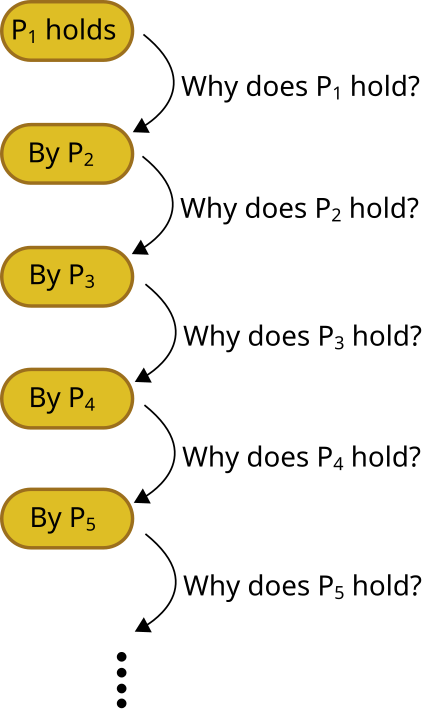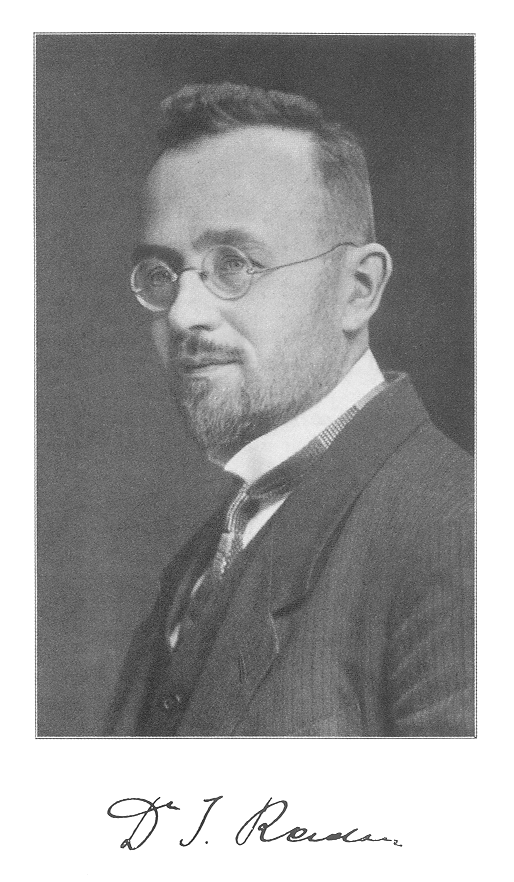Preamble
A short account of origins of mathematical formalism of neural networks is presented for physicists and computer scientist in basic discrete mathematical setting informally. The discourse of the development of mathematical formalism on the dynamics of lattice models in statistical physics and learning internal representations of neural networks as discrete architectures as quantitative tools evolve in two almost distinct fields more than half a century with limited overlap. We aim at bridging the gap by claiming that the analogy between two approaches are not artificial but naturally occuring due to how modelling cooperative phenomenon is constructed. We define the Lenz-Ising architectures (ILAs) for this purpose.
Introduction
 |
| Figure: Tartan Ising Model (Linas Viptas-Wikipedia) |
The analogy between two areas of distinct research have been pointed out by many researchers [9–13]. However, the discourse and evolution of these approaches were kept as two distinct research fields and many innovative approaches rediscovered under different names.
Cooperative Phenomenon
Statistical definition of cooperative phenomenon pioneered by Wannier and Kremer [14–16]. Even though their technical work focused on extension of Ising model to 2D with cyclic boundary condition and introduction of exact solutions with matrix algebra, they were the first to document the potential of how Lenz-Ising model actually represent a more generic system than merely model to ferromagnets, namely anything falls under cooperative phenomenon can be addressed with Lenz-Ising type model, summarised in Definition 1.
Definition 1: Cooperative phenomenon of Wannier type [14]: Set of $N$ discrete units, $\mathscr{U}$, identified with a function $s_{i}$, i=1,..,N forms a collection or assembly. The function that identifies the units is a mapping $s_{i}: \mathbb{R} \rightarrow \mathbb{R}$. A statistic $\mathscr{S}$ applied on $\mathscr{U}$ is called cooperative phenomenon of Wannier type $\mathscr{W}$.
Definition 2. Event propagation [14] An event is defined as a snapshot of cooperative phenomenon of Wannier type $\mathscr{W}$. If an event takes place of one unit of assembly $\mathscr{U}$, the same event will be favored by other units, this is expressed as event propagation between two disjoint set of units $\mathscr{E}(u_{1}, u_{2})$, and $u_{1} \cap u_{2} = \varnothing$ and $u_{1}, u_{2} \in \mathscr{U}$ and with an additional statistic $\mathscr{S}$ is defined.
The parallels between Wannier’s event propagations are remarkably the same as of neural network formalism defined by McCulloch-Pitts-Kleene [6,7], not only conceptually but matematical treatment is identical and originates from Lenz-Ising model’s treatment of discrete units. As we mentioned, this goes beyond doubt not a simple analogy but forms a generic framework as envisioned by Wannier. The similarity between ferromagnetic systems and neural networks is probably first documented directly by Little [8]: Spin states of magnetic spins corresponds to firing state of a neuron. Unfortunately, Little only see it as simple analogy, and missed the opportunity provided by Wannier as a generic natural phenomenon of cooperation.
The conceptual similarity and inference on Wannier’s event propagation appears to be quite close to Hebb’s learning [20] and gives natural justification for backpropagation for multilayered networks. History of backpropagation is exhaustively studied elsewhere [18].
Lenz-Ising Architectures (ILAs): Ferromagnets to Nerve Nets
 |
| Ernst Ising Image owner APS - Physics Today : Obituary |
Definition: Lenz-Ising Architectures (ILAs)
Given Wannier type cooperative phenomenon $\mathscr{W}$, imposing constrains
on the discrete units, $\mathscr{U}^{c}$ that they should be spatially correlated
on the edges $E$ of an arbitrary graph $\mathscr{G}(E, V)$ with ordering and
with vertices $V$ of the arbitrary graph carring coupling weight between connected
two units with biases. Set of event propagations $\mathscr{E}^{c}$ defined on
the cooperative phenomeon can induce dynamics on defining vertice weights, or
vice versa. ILAs are defined as statistic $\mathscr{S}$ applied to $\mathscr{U}^{c}$
with propagations $\mathscr{E}^{c}$.
Lenz-Ising Architectures (ILAs) should not be confused with graph neural networks as it does not model data structures. It could be seen as subset of graph dynamical systems in some sense but formal connections should be established elsewhere. However, primary characteristic of ILAs are that it is conceptual and mathematical representation of spin-glass systems (including Lenz-Ising, Anderson, Sherrington-Kirkpatrick, Potts systems) and neural networks (including recurrent and convolutional networks) under the same umbrella.
Learning representations inherent in Metropolis-Glauber dynamics
The primary originality in any neural network research papers lies in so called learning representation from data and generalisation. However, it isn’t obvious to the that community that actually spin-glasses are capable of learning representations inherently by induced dynamics such as Metropolis or Glauber dynamics by construction, as an inverse problem.
In physics literature this appears as finding a solution to the problem of how to express free energy and minimisation of this with respect to weights or coupling coefficients, This is noting but a learning represenations. Usually a simulation approach is taken as a route, for example Monte Carlo techniques [5, 21, 22] via Metropolis or Glauber dynamics. The intimate connection between concepts of ergodicity and learning in deep learning is recently shown [13,23,24] in this context.
 |
| Roy J. Glauber (Wikipedia) Glauber dynamics |
As we argued earlier the generic definition provided by Wannier on cooperative phenomenon and ILAs; there is an intimate connection with learning and so called solving spin-glasses that usually boils down to computing free energies as mentioned. And a link between two distinct fields, computing backpropagation and free energies are natural candidates to establish equivalence relations.
Conclusions and Outlook
Apart from honouring physicists Lenz and Ising, based on understanding of cooperative phenomenon’s origins, naming the research outpus from of spin-glasses and neural networks under an umbrella term Lenz-Ising architectures (ILAs) is historically accurate and technically a resonable naming scheme under the overwhelming evidence given in the literature. This is akin to naming current computers with von Neumann architectures. This forms the origins of connectionist learning from statistical physics, where this approach currently enjoying vast engineering success today.
The rich connection between two areas in computer science and statistical physics should be celebrated. For more fruitful collaborations, both literatures, embracing large statistics literature as well, should converge much more closely. This would help communities to avoid awkward situations of reinventing the wheel again and hindering recognition of the work done by physicists decades earlies, i.e., Ising and Lenz.
Notes
No competing or other kind of conflict of interest exists. This work is produced solely with the aim of scholarly work and does not have any personal nature at all. This essay is dedicated in memory of Ernst Ising for his contribution to physics of ferromagnetic materials, now seems to have far more implications.
References
[1] Kenneth H Rosen. Handbook of Discrete and Combinatorial Mathematics. CRC Press, 1999.
[2] W.Lenz. Beitrag zum Verstl ̈andnis der Magnetischen Erscheinungen in Festen Korpern. Phys.Z, 21:613, 1920.
[3] Ernst Ising. Beitrag zur Theorie des Ferromagnetismus. Zeitschrift furr Physik, 31(1):253–258, 1925.
[4] Thomas Ising, Reinhard Folk, Ralph Kenna, Bertrand Berche, and Yurij Holovatch. The fate of Ernst Ising and the fate of his model. arXiv preprint arXiv:1706.01764, 2017.
[5] David P Landau and Kurt Binder. A guide to Monte Carlo Simulations in Statistical Physics. Cambridge University Press, 2014.
[6] W.S. McCulloch and W.H. Pitts. A Logical Calculus of the Ideas Imminent in Nervous Activity.Bull. Math. Biophys.,(5), pages 115–133.
[7] Stephen Cole Kleene. Representation of Events in Nerve Nets and Finite Automata. Technical report, RAND Project, Santa Monica, 1951.
[8] W. A. Little. The Existence of Persistent States in the Brain. Mathematical Biosciences, 19(1-2):101–120, 1974.
[9] P Peretto. Collective Properties of Neural Networks: a Statistical Physics Approach. Biological Cybernetics, 50(1):51–62, 1984.
[10] Jan L van Hemmen. Spin-glass Models of a Neural Network. Physical Review A, 34(4):3435, 1986.
[11] Haim Sompolinsky. Statistical Mechanics of Neural Networks. Physics Today, 41(21):70–80,1988.
[12] David Sherrington. Neural Networks: the Spin Glass Approach. In North-Holland MathematicalLibrary, volume 51, pages 261–291. Elsevier, 1993.
[13] Yasaman Bahri, Jonathan Kadmon, Jeffrey Pennington, Sam S Schoenholz, Jascha Sohl-Dickstein, and Surya Ganguli. Statistical Mechanics of Deep Learning. Annual Review of Condensed Matter Physics, 2020.
[14] Gregory H Wannier. The Statistical Problem in Cooperative Phenomena. Reviews of Modern Physics, 17(1):50, 1945.
[15] Hendrik A Kramers and Gregory H Wannier. Statistics of the two-dimensional ferromagnet.Part I. Physical Review, 60(3):252, 1941.
[16] Hendrik A Kramers and Gregory H Wannier. Statistics of the two-dimensional ferromagnet.Part II. Physical Review, 60(3):263, 1941.
[17] C van der Malsburg. Frank Rosenblatt: principles of neurodynamics: perceptrons and the theory of brain mechanisms. In Brain theory, pages 245–248. Springer, 1986.
[18] J. Schmidhuber. Deep learning in Neural Networks: An overview. Neural networks, 61:85–117, 2015. & Yoshua Bengio, Yann Lecun, Geoffrey Hinton, Communications of the ACM, July 2021, Vol. 64 No. 7, Pages 58-65 (2021) link
[19] Duncan J Watts and Steven H Strogatz. Collective dynamics of ‘small-world’networks. Nature,393(6684):440, 1998.
[20] Donald Olding Hebb. The Organization of Behavior: a Neuropsychological Theory. J. Wiley;Chapman & Hall, 1949.
[21] Mehmet Suezen. Effective ergodicity in single-spin-flip dynamics. Physical Review E, 90(3):032141, 2014.
[22] Mehmet Suezen. Anomalous diffusion in convergence to effective ergodicity. arXiv preprint arXiv:1606.08693, 2016.
[23] Mehmet Suezen, Cornelius Weber, and Joan J Cerda. Spectral ergodicity in deep learning architectures via surrogate random matrices. arXiv preprint arXiv:1704.08303, 2017.
[24] Mehmet Suezen, JJ Cerda, and Cornelius Weber. Periodic Spectral Ergodicity: A Complexity Measure for Deep Neural Networks and Neural Architecture Search. arXiv preprint arXiv:1911.07831, 2019.
Postscript 1:
(Deep) Machine learning as a subfield of statistical physics
Often researchers considers some machine learning methods
under different umbrella terms compare to established
statistical physics. However, beyond being mare analogy,
application of these methods are quite striking. Consequently,
there is a great tradition in machine learning practice
of being sub-field of statistical physics with explicit
classification within PACS.
Hopfield Networks <- Ising-Lenz model
Boltzmann Machines <- Sherrington-Kirkpatrick model
Diffusion Models <- Langevin Dynamics, Fokker-Planck Dynamics
Softmax <- Boltzmann-Gibbs connection to partition function
Energy Based Models <- Spin-glasses, Hamiltonian dynamics
For this reason, we provide semi-formal mathematical definitions
in the recent article, establishing that deep learning architectures
should be called Ising-Lenz Architectures (ILAs), akin to calling
current computers having von Neumann architectures.







